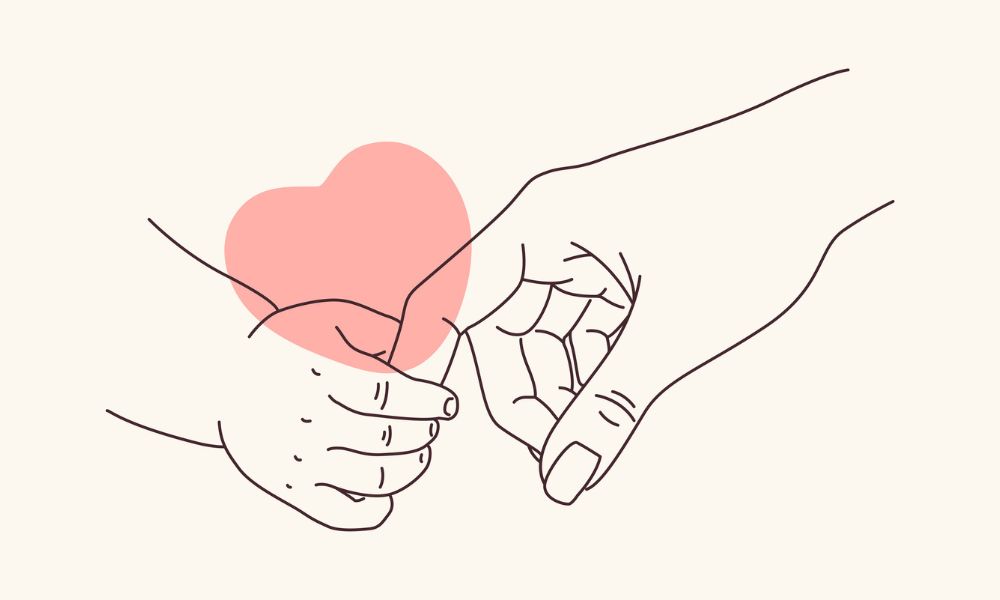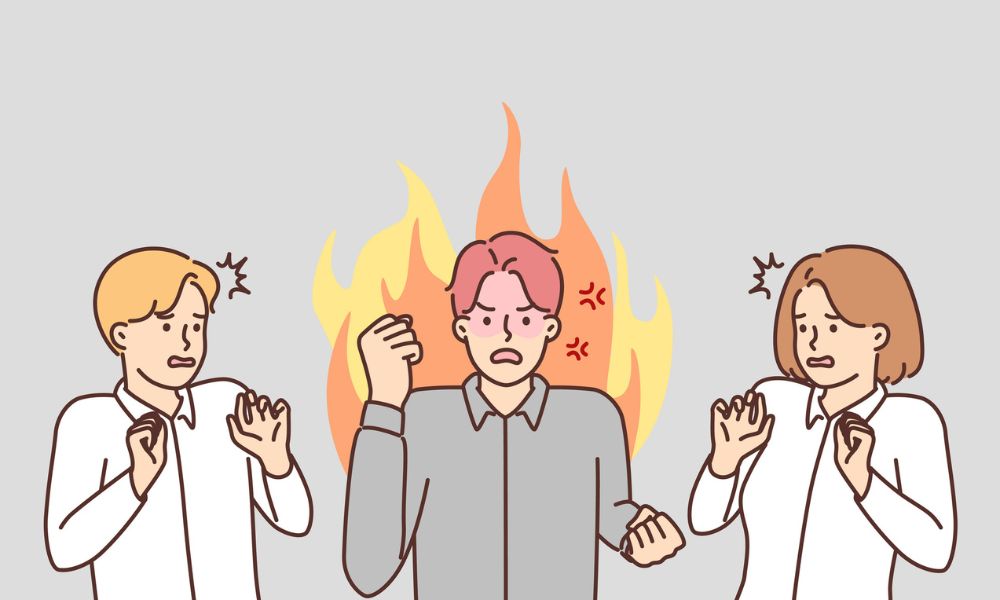Recognising the early signs of anger is crucial for our mental and emotional well-being. When we identify these signs early, we can take steps to manage our anger before it escalates into more serious issues. Anger often manifests in both physical and behavioural changes that, if left unchecked, can harm our relationships and personal peace.

We may notice things like a racing heart, tension in our muscles, or feeling easily provoked by small annoyances. Understanding these physical sensations along with emotional cues can be the first step in regaining control. By paying attention to how anger affects our thoughts and actions, we can create a healthier response to situations that trigger us.
Being aware of anger’s warning signs not only benefits us individually but also helps improve our interactions with others. Learning to manage these signs can lead to better communication and stronger connections.
Key Takeaways
- Recognising physical and emotional signs of anger helps us manage it effectively.
- Early awareness of anger can improve our relationships.
- Learning to control anger prevents escalation into more serious issues.
Understanding Anger

Recognising anger starts with understanding what it is. Anger is a normal emotion but can sometimes be misunderstood. Let’s look at its definition and address some common myths surrounding it.
Defining Anger
Anger is an emotional response that can arise from frustration, hurt, or fear. It can be mild irritation or intense rage. We may experience physical signs, such as a quickened heartbeat, tense muscles, or increased energy.
Our body’s reaction is part of a natural response system. Anger can signal that something is wrong, urging us to take action or protect ourselves. It's important to note that anger is not inherently bad. Instead, how we manage and respond to it can determine its impact on our lives and relationships.
Common Myths About Anger
There are many myths about anger that can lead to misunderstanding. One common myth is that expressing anger is always harmful. In truth, expressing anger can be healthy if done constructively.
Another myth is that anger is a sign of weakness. In fact, feeling anger is a normal part of human emotions.
We need to recognise that managing anger requires skill. By challenging these myths, we can learn to deal with our emotions in a healthier way. This approach allows us to respond more effectively when we experience anger.
Identifying Physical Signs of Anger

When we recognise the physical signs of anger, we can better manage our emotions. This section highlights specific facial expressions, body language, and physiological responses that often signal rising anger.
Facial Expressions
Facial expressions are a clear indicator of anger. We may notice a furrowed brow or narrowed eyes when anger begins to build. These changes can occur quickly and often reflect our internal feelings.
The lips may become tight or pressed together, showing tension. A clenched jaw is another common sign. These facial cues can reveal our emotional state even before we verbalise our feelings.
By being aware of these signs, we can start to understand our anger better. This can help us take steps to address it.
Body Language
Our body language can also tell us a lot about our anger. We might stand with our shoulders squared and our body tense. This stance often indicates readiness for confrontation.
Clenched fists are another sign that anger is present. Sometimes, we may even take a step forward or lean in closely, which can signal aggression.
Alternatively, some people might isolate themselves or withdraw, showing anger through lack of engagement. Being mindful of these physical signals can help us explain our feelings to others effectively.
Physiological Responses
Physiological responses happen in our bodies when we feel angry. A racing heart rate is a common sign of anger. We might also notice our palms getting sweaty as tension builds.
Other responses include an increase in body temperature. We may feel hot in our face and neck areas, which can be uncomfortable.
Some people experience trembling or shaking as well. Recognising these responses can help us pinpoint when we are becoming angry and encourage us to take suitable action before it escalates.
Recognising Behavioural Changes

Behavioural changes can be key indicators of rising anger. By paying attention to both verbal cues and non-verbal communication, as well as responses to external triggers, we can better understand when emotions are becoming unmanageable.
Verbal Cues
Verbal cues can reveal a lot about someone's emotional state. When we observe an increase in volume or intensity of speech, it often signifies heightened anger. Think of phrases that include shouting, swearing, or using aggressive language.
We might notice a change in someone's tone, growing sharper or more sarcastic. This can signal frustration. If a person becomes repetitive in their statements or interrupts frequently, these can be signs of agitation. Recognising these verbal signs can help us address anger before it escalates.
Non-Verbal Communication
Non-verbal communication plays a significant role in expressing anger. To detect anger, we should pay attention to body language. Signs such as clenched fists, tense muscles, or crossed arms can indicate discontent.
Other significant cues include facial expressions. A furrowed brow, glaring eyes, or a tight jaw often signify displeasure. Additionally, changes in posture, like leaning forward aggressively or pacing, showcase restlessness. Being aware of these non-verbal signals can help us respond appropriately.
Response to External Triggers
How we respond to external triggers can also help identify early anger signs. For example, if someone reacts strongly to minor inconveniences, like traffic or delays, it may indicate underlying issues.
We should observe if someone often blames others for their frustration. Frequent dismissal of others' ideas or interruptions during discussions can signal irritation. These reactions may not seem severe at first but can indicate a growing tendency to react with anger. Recognising these responses allows us to intervene and support constructive communication.
Emotional Indicators

Recognising emotional indicators is essential for identifying early signs of anger. We can observe specific feelings that signal the likelihood of anger building up within us. Addressing these feelings at an early stage helps us manage our reactions more effectively.
Irritability Levels
Our irritability levels can serve as a strong indicator of rising anger. When we find ourselves getting annoyed by minor issues, it might be time to pay attention. This could include feeling easily upset by routine inconveniences, like delays or minor mistakes.
We may start to notice that our patience is wearing thin. If we frequently snap at others without significant provocation, it's a sign we need to reflect on our emotional state. Keeping track of our irritability can help us spot patterns that predict anger spikes.
Frustration Threshold
Our frustration threshold refers to the point at which we lose our temper. If we find that we become frustrated quickly, or that small problems trigger intense feelings, we should take note.
For instance, tasks that once felt manageable can suddenly become overwhelming. This shift can signal potential anger issues. Identifying moments that push us beyond our limits allows us to develop coping techniques. We might try deep breathing, stepping away, or discussing our frustrations before they escalate.
Mood Fluctuations
Mood fluctuations are another key emotional indicator. We might experience sudden changes in how we feel—going from calm to furious in a short time. This inconsistency can be alarming and often serves as a warning sign of underlying anger.
If we notice that our mood swings are occurring more frequently, it’s important to explore the reasons behind them. Keeping a journal can help us document our feelings and identify triggers. By recognising patterns in our mood, we can take proactive steps towards maintaining emotional balance and preventing anger from taking control.
Cognitive Signs of Anger
Cognitive signs of anger involve how we think and perceive situations that can trigger our feelings. Recognising these signs can help us manage our emotions effectively and prevent escalation.
Negative Thought Patterns
Negative thought patterns often creep in when we start to feel anger. We might dwell on perceived slights or focus solely on problems rather than solutions. This can create a cycle that feeds our anger, leading to more intense feelings.
We may also think in extremes, seeing situations as all good or all bad. This black-and-white thinking can make us more likely to react angrily. Recognising these negative thoughts is the first step in breaking the cycle and regaining control over our emotions.
Cognitive Distortions
Cognitive distortions are faulty ways of interpreting situations that can fuel anger. For instance, we may engage in mind reading, believing we know what others are thinking. This can lead to misunderstandings and increased frustration.
Another common distortion is catastrophising. We might jump to worst-case scenarios, blowing situations out of proportion. This can result in heightened anger responses. By identifying these distortions, we can challenge and reframe our thoughts, helping to reduce our anger levels.
Concentration Difficulties
When we feel angry, it can be hard to concentrate. Our minds may race with negative thoughts, making it challenging to focus on tasks at hand. This lack of concentration can lead to mistakes and further irritability.
Additionally, anger can cause us to become more easily distracted. We might fixate on what triggered our anger instead of being present in the moment. Recognising this difficulty can help us develop strategies to refocus and manage our anger more effectively.
Warning Signs in Social Settings
In social situations, recognising early signs of anger is crucial. These signals can help us understand when someone may be struggling with their emotions.
Interpersonal Relations
We often notice changes in how individuals interact with others. If someone becomes unusually silent or withdrawn, it may indicate rising frustration. Interrupting others frequently or talking over people can also be a sign of irritation.
Body language plays a significant role. Crossed arms, clenched fists, or avoiding eye contact are often red flags. We should pay attention to sudden shifts in tone or volume, which can indicate growing anger.
Active listening habits may change too. If a person seems less engaged in conversations or begins rolling their eyes, it can signal a brewing issue. Recognising these changes helps us address anger before it escalates.
Conflict Escalation
When discussions heat up, we might see specific warning signs. Raised voices and aggressive gestures indicate that emotions are building. Pacing or fidgeting can also suggest brewing anger.
We should look for confrontational body language, such as pointing fingers or invading personal space. These actions often show someone is starting to feel overwhelmed.
Another sign is the tendency to blame others. If a discussion turns accusatory, it’s a clear shift that can escalate. Remaining aware of these signs is essential for managing conflicts effectively and promoting healthier interactions.
Managing Early Anger Signs
Recognising and managing the early signs of anger is essential for maintaining our emotional well-being. By using specific techniques, we can take control of our feelings and prevent them from escalating. Seeking support can also play an important role in our journey to manage anger effectively.
Self-Regulation Techniques
We can use several self-regulation techniques to manage our early anger signs. Firstly, deep breathing helps to calm our mind and body. By inhaling deeply through the nose for four counts, holding for four counts, and exhaling through the mouth for four counts, we can release tension.
Next, identifying our triggers is crucial. We should keep a journal of situations that invoke anger. This awareness helps us prepare for and cope with these feelings.
Physical activities, like walking or stretching, can also aid in managing anger. Exercise releases endorphins, which improve our mood and reduce stress.
Lastly, practising mindfulness techniques allows us to stay grounded. Regular meditation can improve our emotional awareness and help us respond calmly to situations.
Seeking Support
When managing anger, seeking support is vital. We can reach out to trusted friends or family. Sharing our feelings allows us to process emotions and gain perspective.
Joining support groups can also be beneficial. These groups provide a safe space for sharing experiences and learning from others. We can learn coping strategies from people facing similar challenges.
Therapy or counselling can offer professional guidance. A therapist can help us develop personalised techniques for managing our anger.
By building a support network, we can feel less isolated in our struggles. Together, we can develop healthier ways to cope with anger and improve our relationships.
Frequently Asked Questions
Recognising the early signs of anger is crucial for managing it effectively. We can identify both psychological and physical symptoms, as well as emotional experiences that often precede anger. Understanding these aspects helps in spotting anger issues across different age groups.
What are the initial indications of burgeoning anger?
We may notice irritability, a change in our temper, or an increase in impatience. These signs can signal that anger is starting to build up.
Can you identify the psychological precursors to anger?
Psychologically, we might feel a sense of frustration or injustice. Thoughts about past grievances or feeling overlooked often contribute to the rising anger.
What physical symptoms typically manifest in the early stages of anger?
Common physical symptoms include muscle tension, a racing heart, or even clammy hands. These bodily responses are signals that anger is beginning to emerge.
Which emotional experiences commonly precede the onset of anger?
Feelings such as disappointment, hurt, or anxiety can often lead to anger. Recognising these emotional states is key to understanding our reactions.
How can you recognise anger issues in individuals across different age groups?
In children, anger may show up as tantrums or defiance. In adults, it may manifest as irritability or aggressive behaviour. Observing these patterns can help in identifying anger issues.
What steps are recommended to detect the earliest signs of anger effectively?
We should practice self-reflection and mindfulness to recognise our feelings. Keeping a journal of our emotions can also help us track triggers and responses, making it easier to manage anger early on.





















